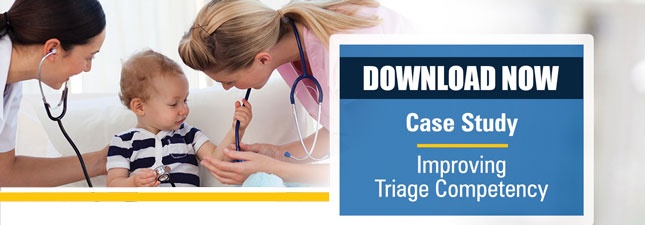 [3 MIN READ]
[3 MIN READ]
As concerns for COIVD-19 continue to escalate in many areas of the country, it is imperative that triage staff remain alert to their role in early identification of potential infection.
- Recognize there will be ongoing changes in safety practices and how your organization processes and treats these patients.
- Your role as the triage nurse is not to diagnose, but to identify potentials for demise.
- Differentiating the flu from COVID-19 can be challenging for the provider. Many patients will present with unrealistic expectations related to diagnosis. Patience is imperative during a public health situation such as this; fear and the “unknown” have an impact on the public, especially since they may be reading and/or hearing information that is not necessarily accurate or current.
- Suspicion for sepsis in the patient presentation will largely drive your triage decision, as will any changes in perfusion.
- You can direct a patient suspected of having COVID-19 from triage to a private room immediately upon their arrival without implying they are a high-risk scenario.
Viral Pandemic Impact
In 2002, SARS appeared in China. It was spread by respiratory droplets and had the strong potential for transmission. SARS was transmitted worldwide; it infected more than 8,000 people and killed 774. In response to SARS, triage questions related to travel became a practice standard.
Fast-forward to 2020, and we are once again faced with a viral pandemic, this time of even greater impact with more than 3.3 million infected and more than 135,000 deaths globally.
Key Triage Education Takeaways
 Our Triage Fundamentals education content has reminded triage nurses for years to be prepared for any virus or other communicable agent that may erupt. It’s important to remember these key takeaways:
Our Triage Fundamentals education content has reminded triage nurses for years to be prepared for any virus or other communicable agent that may erupt. It’s important to remember these key takeaways:
- Pay attention to responses to questions about travel.
- Be alert to a sudden surge of patients with similar symptoms.
- Stay current on organizational policies/procedures related to these types of events.
- Arm yourself with knowledge that is credible and current.
- Know the areas in your department that are suitable for respiratory isolation (negative pressure).
National Recommendations for Triaging COVID-19
The following are the CDC’s recommendations for triaging COVID-19:
- Ensure rapid triage and isolation of patients with symptoms of suspected COVID-19 or other respiratory infection (e.g., fever, cough):
- Identify patients at risk for having COVID-19 infection before or immediately upon arrival to the healthcare facility.
- Implement triage procedures to detect persons under investigation (PUI) for COVID-19 during or before patient triage or registration (e.g., at the time of patient check-in), and ensure that all patients are asked about the presence of symptoms of a respiratory infection as well as history of travel to areas experiencing transmission of SARS-CoV-2 – the virus that causes COVID-19 – or contact with possible COVID-19 patients.
- Implement respiratory hygiene and cough etiquette (i.e., placing a facemask over the patient’s nose and mouth if that has not already been done) and isolate the PUI for COVID-19 in an Airborne Infection Isolation Room (AIIR), if available. See recommendations below for patient placement. Additional guidance for evaluating patients in the U.S. for COVID-19 infection can be found on the CDC COVID-19 website.
- Inform infection prevention and control services, local and state public health authorities, and other healthcare facility staff as appropriate about the presence of a person under investigation for COVID-19.
- Provide supplies for respiratory hygiene and cough etiquette – e.g., 60%-95% alcohol-based hand sanitizer (ABHS), tissues, no-touch receptacles for disposal, and facemasks – at healthcare facility entrances, waiting rooms, patient check-ins, etc.


